Tarek Ahmed. Reservoir engineering handbook
Подождите немного. Документ загружается.

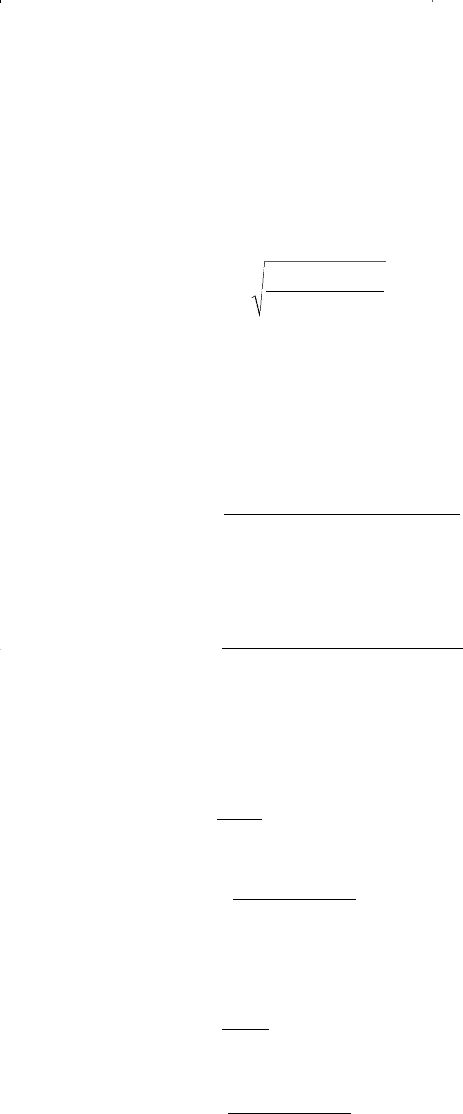
Solution
Step 1. Calculate the drainage radius of the vertical well:
Step 2. Calculate the drainage area of the 1,000- and 2,000-ft-long hori-
zontal well using Joshi’s two methods:
Method I
• For the 1,000-ft horizontal well using Equation 7-45:
• For the 2,000-ft horizontal well:
Method II
• For the 1,000-ft horizontal well using Equation 7-46:
• For the 2,000-ft horizontal well:
A acres=
(
)
(
)
=
p 1745 745
43 560
94
,
a =+=
2000
2
745 1745'
A acres=
(
)
(
)
=
p 1245 745
43 560
67
,
a =+=
1000
2
745 1245'
A acres=
¥+
=
()( )()
,
2000 2 745 745
43 560
108
2
p
A acres=
¥+
=
()( )()
,
1000 2 745 745
43 560
74
2
p
rb ft
ev
==
(
)
(
)
=
40 43 560
745
,
p
518 Reservoir Engineering Handbook
Reservoir Eng Hndbk Ch 07 2001-10-24 16:50 Page 518

Step 3. Averaging the values from the two methods:
• Drainage area of 1,000-ft-long well
• Drainage area of 2,000-ft-long well
Step 4. Calculate the number of 1,000-ft-long horizontal wells:
Step 5. Calculate the number of 2,000-ft-long horizontal wells.
From a practical standpoint, inflow performance calculations for horizon-
tal wells are presented here under the following two flowing conditions:
• Steady-state single-phase flow
• Pseudosteady-state two-phase flow
A reference textbook by Joshi (1991) provides an excellent treatment
of horizontal well technology and it contains a detailed documentation
of recent methodologies of generating inflow performance relationships.
Horizontal Well Productivity under Steady-State Flow
The steady-state analytical solution is the simplest solution to various
horizontal well problems. The steady-state solution requires that the pres-
sure at any point in the reservoir does not change with time. The flow
rate equation in a steady-state condition is represented by:
Q
oh
= J
h
Dp (7-48)
Total number of 2,000-ft-long horizontal wells ==
480
101
5 wells
Total number of 1,000-ft-long horizontal wells ==
480
71
7 wells
A acres=
+
=
108 94
2
101
A acres=
+
=
74 67
2
71
Oil Well Performance 519
Reservoir Eng Hndbk Ch 07 2001-10-24 16:50 Page 519

where Q
oh
= horizontal well flow rate, STB/day
Dp = pressure drop from the drainage boundary to wellbore, psi
J
h
= productivity index of the horizontal well, STB/day/psi
The productivity index of the horizontal well J
h
can be always
obtained by dividing the flow rate Q
oh
by the pressure drop Dp, or:
There are several methods that are designed to predict the productivity
index from the fluid and reservoir properties. Some of these methods
include:
• Borisov’s Method
• The Giger-Reiss-Jourdan Method
• Joshi’s Method
• The Renard-Dupuy Method
Borisov’s Method
Borisov (1984) proposed the following expression for predicting the pro-
ductivity index of a horizontal well in an isotropic reservoir, i.e., k
v
= k
h
where h = thickness, ft
k
h
= horizontal permeability, md
k
v
= vertical permeability, md
L = length of the horizontal well, ft
r
eh
= drainage radius of the horizontal well, ft
r
w
= wellbore radius, ft
J
h
= productivity index, STB/day/psi
The Giger-Reiss-Jourdan Method
For an isotropic reservoir where the vertical permeability k
v
equals the
horizontal permeability k
h
, Giger et al. (1984) proposed the following
expression for determining J
h
:
J
hk
B
r
L
h
L
h
r
h
h
oo
eh
w
=
Ê
Ë
ˆ
¯
+
Ê
Ë
ˆ
¯
Ê
Ë
Á
ˆ
¯
˜
È
Î
Í
Í
˘
˚
˙
˙
0 00708
4
2
.
ln lnm
p
(7 - 49)
J
Q
p
h
oh
=
D
520 Reservoir Engineering Handbook
Reservoir Eng Hndbk Ch 07 2001-10-24 16:50 Page 520
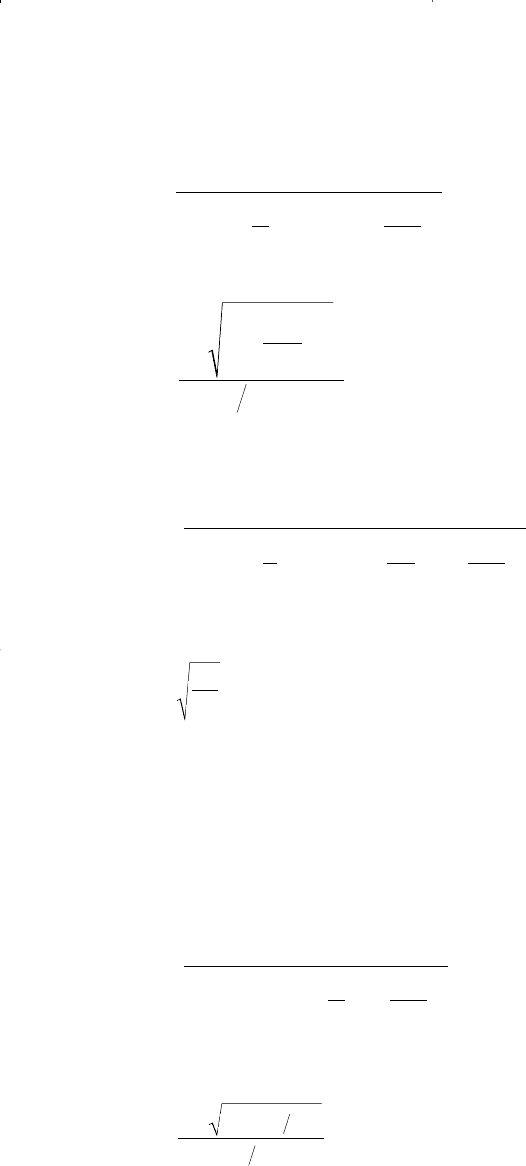
To account for the reservoir anisotropy, the authors proposed the fol-
lowing relationships:
With the parameter B as defined by:
where k
v
= vertical permeability, md
L = Length of the horizontal section, ft
Joshi’s Method
Joshi (1991) presented the following expression for estimating the pro-
ductivity index of a horizontal well in isotropic reservoirs:
with
R
aa L
L
=
+-
22
2
2
()
()
(7 - 55)
J
hk
BR
h
L
h
r
h
h
oo
w
=
+
Ê
Ë
ˆ
¯
Ê
Ë
Á
ˆ
¯
˜
È
Î
Í
Í
˘
˚
˙
˙
0 00708
2
.
ln ( ) lnm
(7 - 54)
B
k
k
h
v
= (7 - 53)
J
k
B
h
X
B
L
h
r
h
h
oo
w
=
Ê
Ë
ˆ
¯
+
Ê
Ë
Á
ˆ
¯
˜
Ê
Ë
Á
ˆ
¯
˜
È
Î
Í
Í
˘
˚
˙
˙
0 00708
1
2
2
.
ln ( ) lnm
(7 - 52)
X
11
L
2r
L2r
(7 - 51)
eh
2
eh
=
++
Ê
Ë
Á
ˆ
¯
˜
()
J
Lk
B
L
h
X
h
r
h
h
oo
w
=
Ê
Ë
ˆ
¯
+
Ê
Ë
Á
ˆ
¯
˜
È
Î
Í
Í
˘
˚
˙
˙
0 00708
2
.
ln ( ) lnm
(7 - 50)
Oil Well Performance 521
Reservoir Eng Hndbk Ch 07 2001-10-24 16:50 Page 521
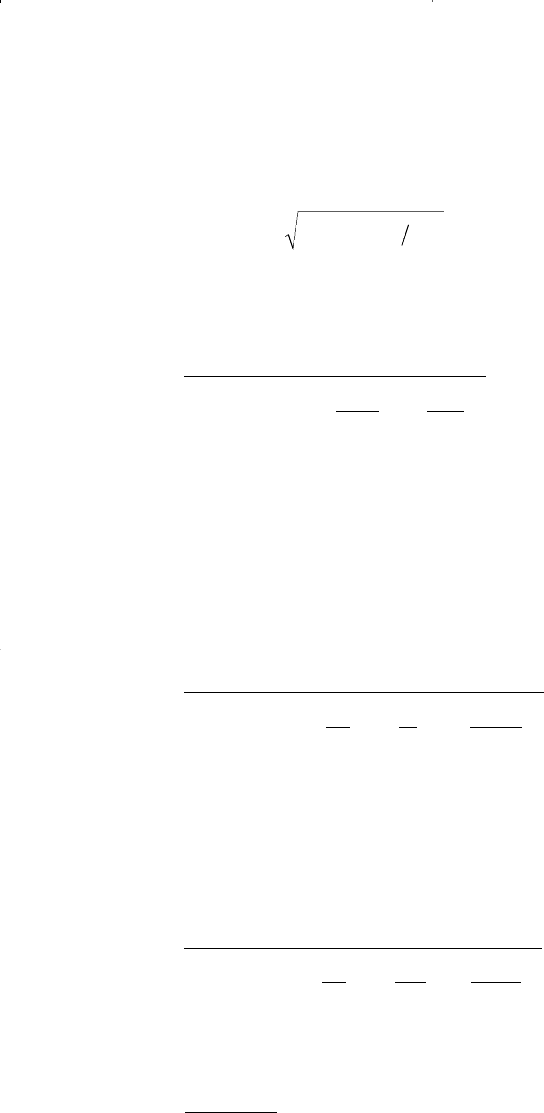
and a is half the major axis of drainage ellipse and given by:
Joshi accounted for the influence of the reservoir anisotropy by intro-
ducing the vertical permeability k
v
into Equation 7-54, to give:
where the parameters B and R are defined by Equations 7-53 and 7-55,
respectively.
The Renard-Dupuy Method
For an isotropic reservoir, Renard and Dupuy (1990) proposed the fol-
lowing expression:
where a is half the major axis of drainage ellipse and given by Equation
7-56.
For anisotropic reservoirs, the authors proposed the following relation-
ship:
where
with the parameter B as defined by Equation 7-53.
¢
=
+
r
Br
B
w
w
()1
2
(7 - 60)
J
hk
B
a
L
Bh
L
h
r
h
h
oo
w
=
Ê
Ë
ˆ
¯
+
Ê
Ë
ˆ
¯
¢
Ê
Ë
Á
ˆ
¯
˜
È
Î
Í
Í
˘
˚
˙
˙
-
0 00708
2
2
1
.
cosh lnm
p
(7 - 59)
J
hk
B
a
L
h
L
h
r
h
h
oo
w
=
Ê
Ë
ˆ
¯
+
Ê
Ë
ˆ
¯
Ê
Ë
Á
ˆ
¯
˜
È
Î
Í
Í
˘
˚
˙
˙
-
0 00708
2
2
1
.
cosh lnm
p
(7 - 58)
J
hk
BR
Bh
L
h
r
h
h
oo
w
=
+
Ê
Ë
Á
ˆ
¯
˜
Ê
Ë
Á
ˆ
¯
˜
È
Î
Í
Í
˘
˚
˙
˙
0 00708
2
2
.
ln ( ) lnm
(7 - 57)
aL rL
eh
=
(
)
++
(
)
È
Î
Í
˘
˚
˙
/. .
.
2 0 5 0 25 2
4
05
(7 - 56)
522 Reservoir Engineering Handbook
Reservoir Eng Hndbk Ch 07 2001-10-24 16:50 Page 522

Example 7-12
A 2,000-foot-long horizontal well drains an estimated drainage area of
120 acres. The reservoir is characterized by an isotropic with the follow-
ing properties:
k
v
= k
h
= 100 md h = 60 ft
B
o
= 1.2 bbl/STB m
o
= 0.9 cp
p
e
= 3000 psi p
wf
= 2500 psi
r
w
= 0.30 ft
Assuming a steady-state flow, calculate the flow rate by using:
a. Borisov’s Method
b. The Giger-Reiss-Jourdan Method
c. Joshi’s Method
d. The Renard-Dupuy Method
Solution
a. Borisov’s Method
Step 1. Calculate the drainage radius of the horizontal well:
Step 2. Calculate J
h
by using Equation 7-49:
Step 3. Calculate the flow rate by applying Equation 7-48:
Q
oh
= (37.4) (3000 - 2500) = 18,700 STB/day
J
STB day psi
h
=
Ê
Ë
ˆ
¯
+
Ê
Ë
ˆ
¯
Ê
Ë
Á
ˆ
¯
˜
È
Î
Í
˘
˚
˙
=
( . )( )( )
(.)(.)ln
()( )
ln
(.)
.//
0 00708 60 100
09 12
4 1290
2000
60
2000
60
203
37 4
p
rft
eh
=
(
)
(
)
=
120 43 560
1290
,
p
Oil Well Performance 523
Reservoir Eng Hndbk Ch 07 2001-10-24 16:50 Page 523
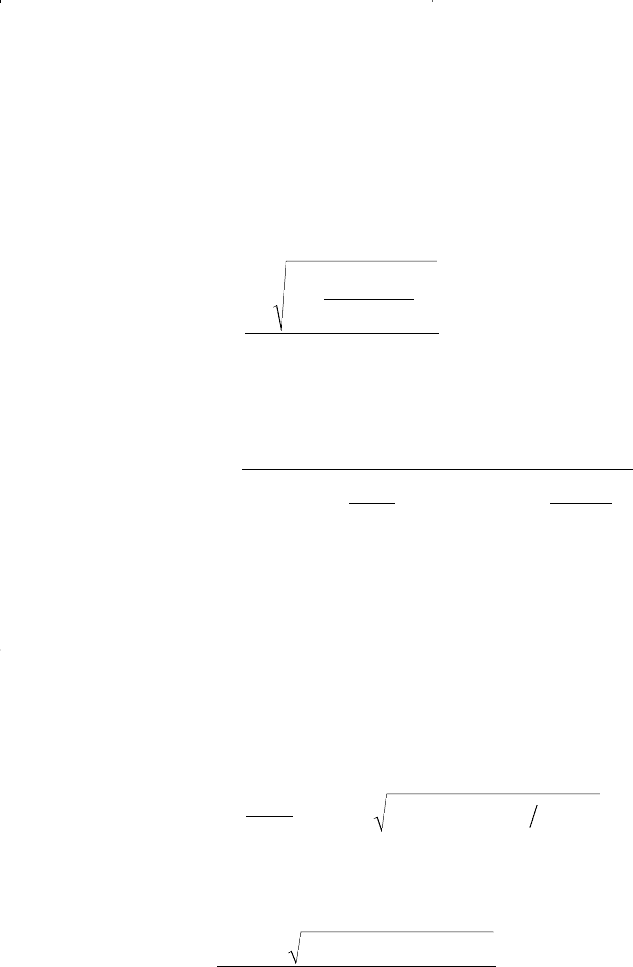
b. The Giger-Reiss-Jourdan Method
Step 1. Calculate the parameter X from Equation 7-51:
Step 2. Solve for J
h
by applying Equation 7-50:
Step 3. Calculate flow rate:
Q
oh
= 44.57 (3000 - 2500) = 22,286 STB/day
c. Joshi’s Method
Step 1. Calculate half major axis of ellipse by using Equation 7-56:
Step 2. Calculate the parameter R from Equation 7-55:
R =
+-
=
1372 1372 2000 2
2000 2
2 311
22
()( /)
(/)
.
aft=
Ê
Ë
ˆ
¯
++
(
)
[]
È
Î
Í
˘
˚
˙
=
2000
2
0 5 0 25 2 1290 2000 1372
2
05
..
.
J
STB day
h
=
Ê
Ë
ˆ
¯
+
Ê
Ë
Á
ˆ
¯
˜
È
Î
Í
˘
˚
˙
=
( . )( )( )
( . )( . ) ln ( . ) ln
(.)
./
1 00708 2000 100
09 12
2000
60
2 105
60
203
44 57
X =
++
Ê
Ë
Á
ˆ
¯
˜
=
11
2000
2 1290
2000 2 1290
2 105
2
()( )
/[( )( )]
.
524 Reservoir Engineering Handbook
Reservoir Eng Hndbk Ch 07 2001-10-24 16:50 Page 524

Step 3. Solve for J
h
by applying Equation 7-54:
Step 4. Q
oh
= (40.3) (3000 - 2500) = 20,154 STB/day
d. The Renard-Dupuy Method
Step 1. Calculate a from Equation 7-56:
a = 1372 ft
Step 2. Apply Equation 7-58 to determine J
h
:
Step 3. Q
oh
= 41.77 (3000 - 2500) = 20,885 STB/day
Example 7-13
Using the data in Example 7-13 and assuming an isotropic reservoir
with k
h
= 100 md and k
v
= 10 md, calculate flow rate by using:
a. The Giger-Reiss-Jourdan Method
b. Joshi’s Method
c. The Renard-Dupuy Method
J
STB day psi
h
=
Ê
Ë
ˆ
¯
+
Ê
Ë
ˆ
¯
Ê
Ë
Á
ˆ
¯
˜
È
Î
Í
˘
˚
˙
=
-
0 00708 60 100
09 12
2 1372
2000
60
2000
60
203
41 77
1
.()()
( . ) ( . ) cosh
()( )
ln
(.)
.//
p
J
STB day psi
h
=
+
Ê
Ë
ˆ
¯
Ê
Ë
Á
ˆ
¯
˜
È
Î
Í
˘
˚
˙
=
0 00708 60 100
09 12 2311
60
2000
60
203
40 3
.()()
( . )( . ) ln ( . ) ln
()(.)
.//
Oil Well Performance 525
Reservoir Eng Hndbk Ch 07 2001-10-24 16:50 Page 525
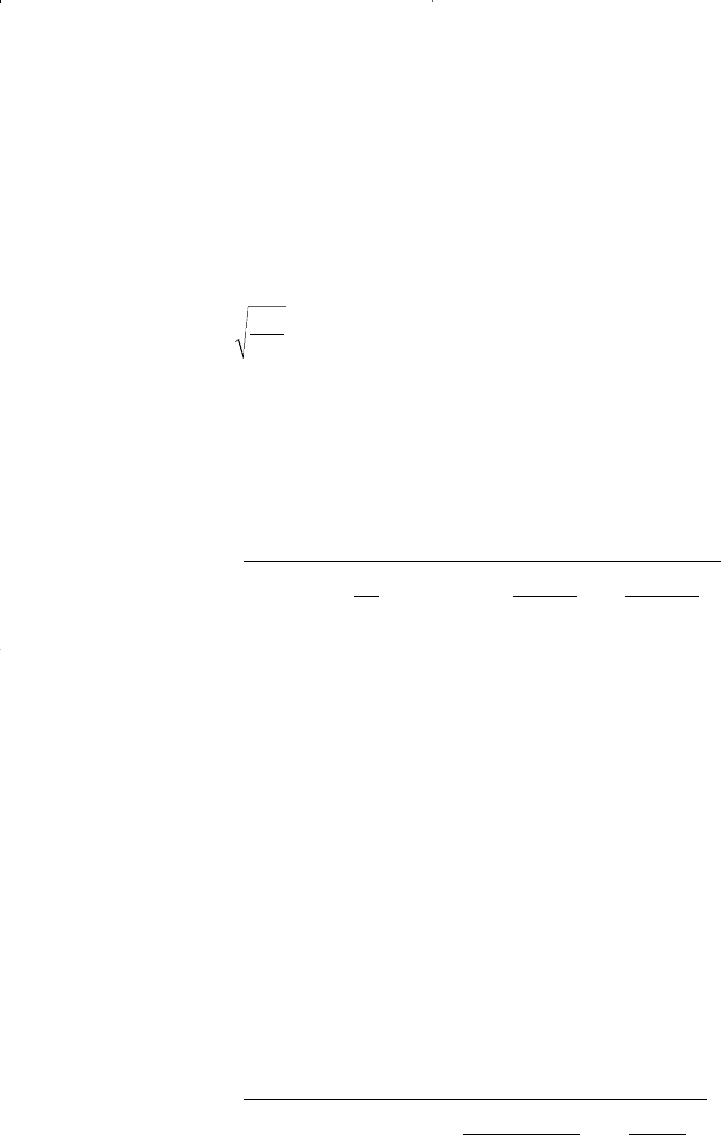
Solution
a. The Giger-Reiss-Jourdan Method
Step 1. Solve for the permeability ratio B by applying Equation 7-53
Step 2. Calculate the parameter X as shown in Example 7-12 to give:
X = 2.105
Step 3. Determine J
h
by using Equation 7-52.
Step 4. Calculate Q
oh
Q
oh
= (18.50) (3000 - 2500) = 9,252 STB/day
b. Joshi’s Method
Step 1. Calculate the permeability ratio b
b=3.162
Step 2. Calculate the parameters a and R as given in Example 7-12.
A = 1372 ft R = 2.311
Step 3. Calculate J
h
by using Equation 7-54.
J
STB day psi
h
=
+
Ê
Ë
Á
ˆ
¯
˜
Ê
Ë
Á
ˆ
¯
˜
È
Î
Í
Í
˘
˚
˙
˙
=
0 00708 60 100
09 12 2311
3 162 60
2000
60
203
17 73
2
.()()
( . ) ( . ) ln ( . )
(. )( )
ln
(.)
.//
J
STB day psi
h
=
Ê
Ë
ˆ
¯
+
Ê
Ë
Á
ˆ
¯
˜
Ê
Ë
Á
ˆ
¯
˜
È
Î
Í
Í
˘
˚
˙
˙
=
0 00708 100
09 12
1
60
2 105
3 162
2000
60
203
18 50
2
.()
( . ) ( . ) ln( . )
.
ln
()(.)
.//
b= =
100
10
3 162.
526 Reservoir Engineering Handbook
Reservoir Eng Hndbk Ch 07 2001-10-24 16:50 Page 526

Step 4. Q
oh
= (17.73) (3000 - 2500) = 8,863 STB/day
c. The Renard-Dupuy Method
Step 1. Calculate r¢
w
from Equation 7-60.
Step 2. Apply Equation 7-59
Step 3. Q
oh
= 19.65 (3000 - 2500) = 9,825 STB/day
Horizontal Well Productivity under Semisteady-State Flow
The complex flow regime existing around a horizontal wellbore proba-
bly precludes using a method as simple as that of Vogel to construct the
IPR of a horizontal well in solution gas drive reservoirs. If at least two
stabilized flow tests are available, however, the parameters J and n in the
Fetkovich equation (Equation 7-35) could be determined and used to
construct the IPR of the horizontal well. In this case, the values of J and
n would not only account for effects of turbulence and gas saturation
around the wellbore, but also for the effects of nonradial flow regime
existing in the reservoir.
Bendakhlia and Aziz (1989) used a reservoir model to generate IPRs
for a number of wells and found that a combination of Vogel and
Fetkovich equations would fit the generated data if expressed as:
where (Q
oh
)
max
= horizontal well maximum flow rate, STB/day
n = exponent in Fetkovich’s equation
V = variable parameter
Q
Q
V
P
p
V
p
p
oh
oh
wf
r
wf
r
n
()
() ()
max
=-
Ê
Ë
Á
ˆ
¯
˜
--
Ê
Ë
Á
ˆ
¯
˜
È
Î
Í
Í
˘
˚
˙
˙
-11 761
2
J
STB day psi
h
=
+
=
-
È
Î
Í
˘
˚
˙
È
Î
Í
˘
˚
˙
Ê
Ë
Á
ˆ
¯
˜
È
Î
Í
˘
˚
˙
0 00708 60 100
09 12
2 1372
2000
3 162 60
2000
60
2 0 1974
19 65
1
2
.()()
( . ) ( . ) cosh
()( ) (. ) ( )
ln
() (. )
.//
p
¢
=
+
=r
w
(.)(.)
()(. )
.
1 3 162 0 3
2 3 162
0 1974
Oil Well Performance 527
Reservoir Eng Hndbk Ch 07 2001-10-24 16:50 Page 527
